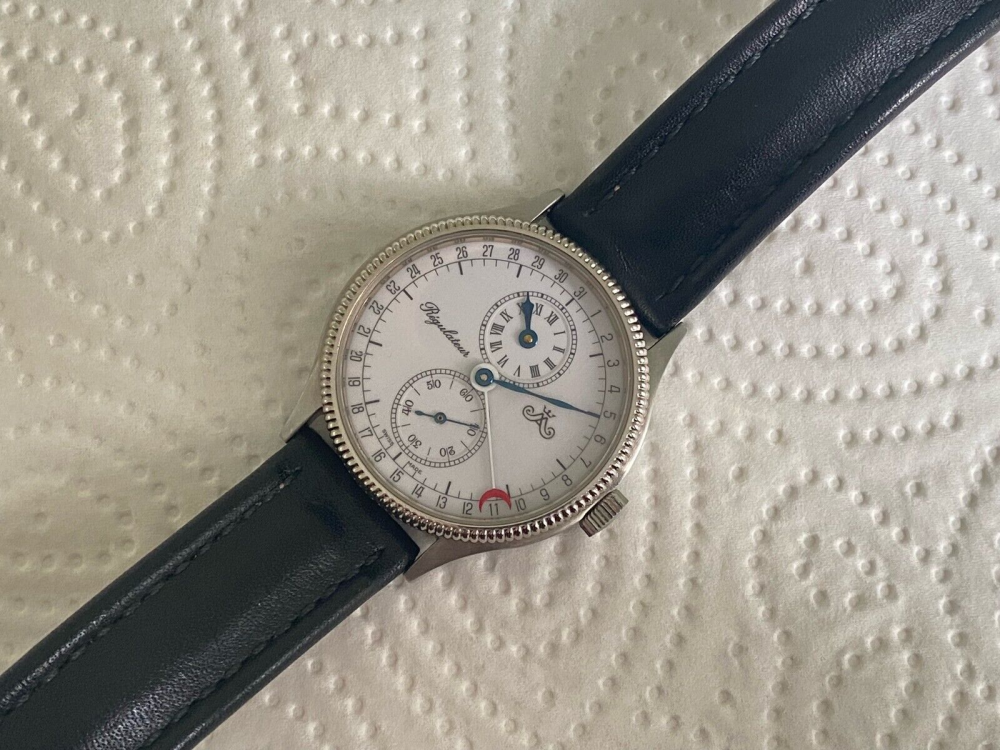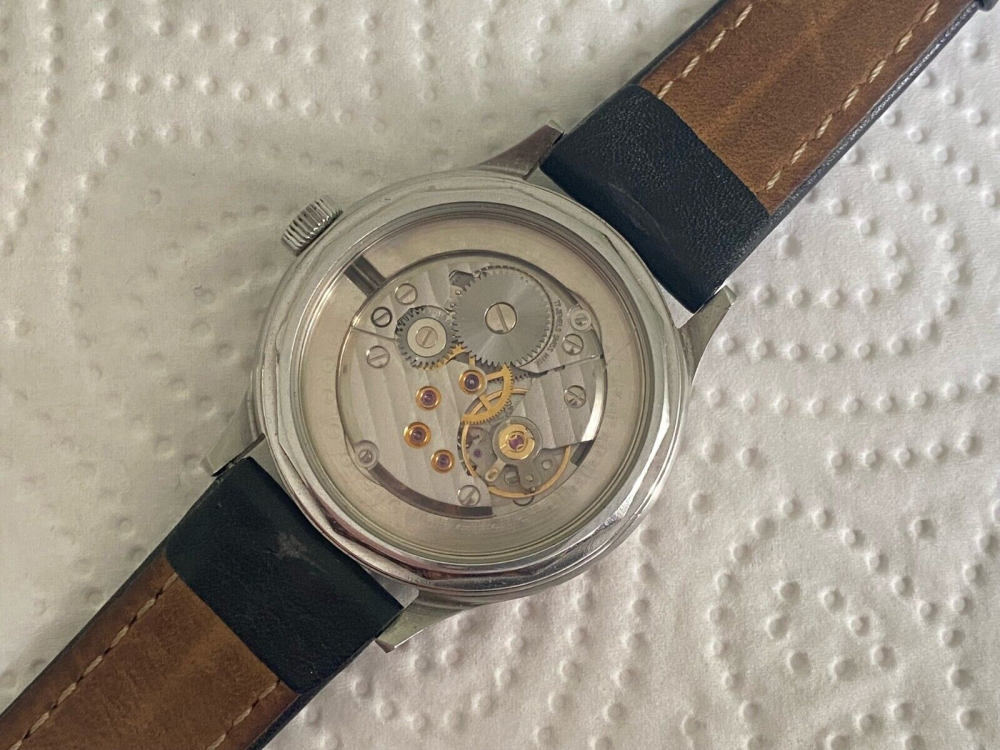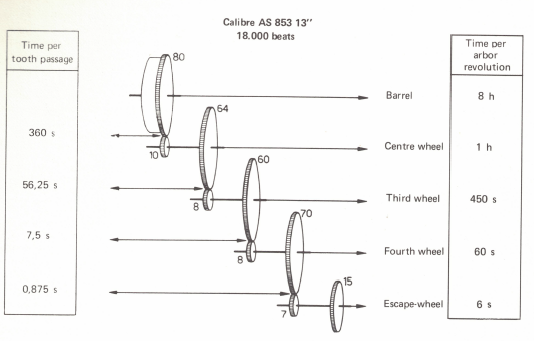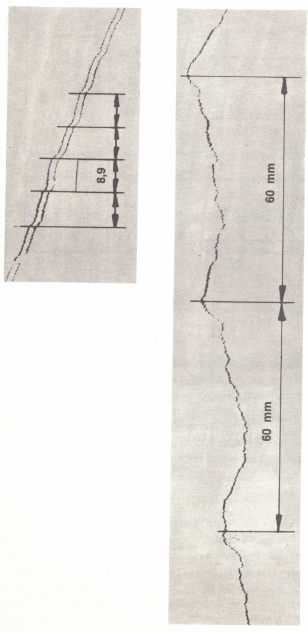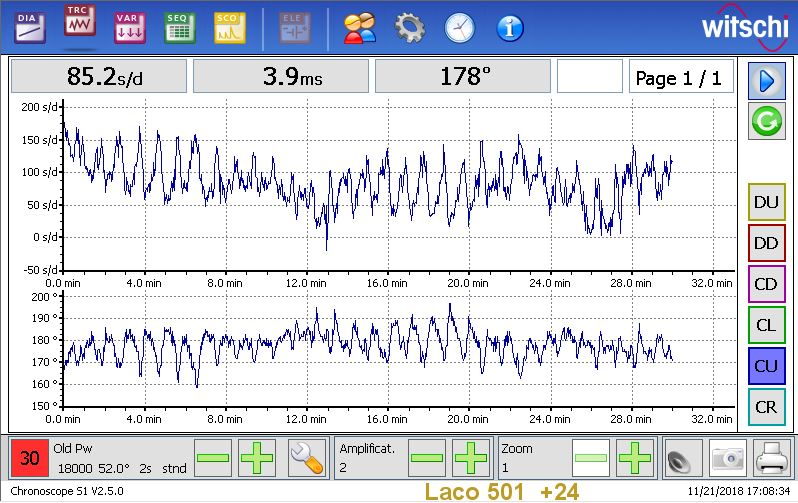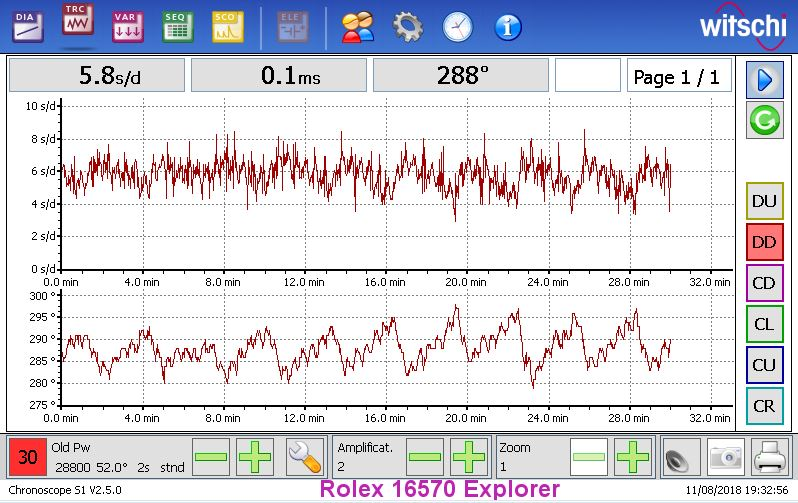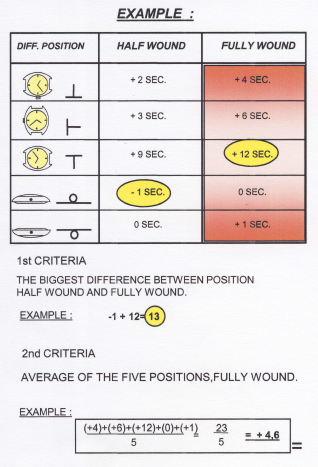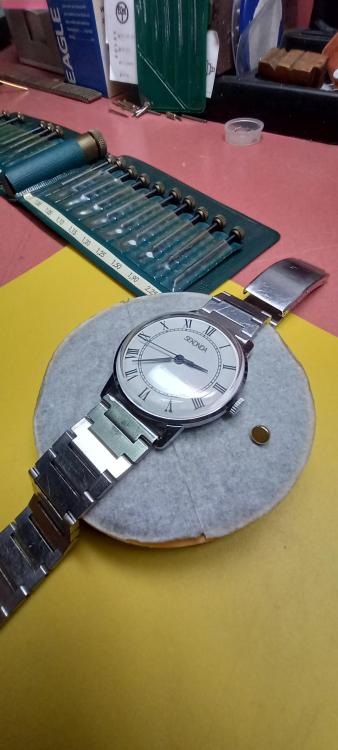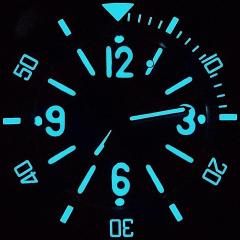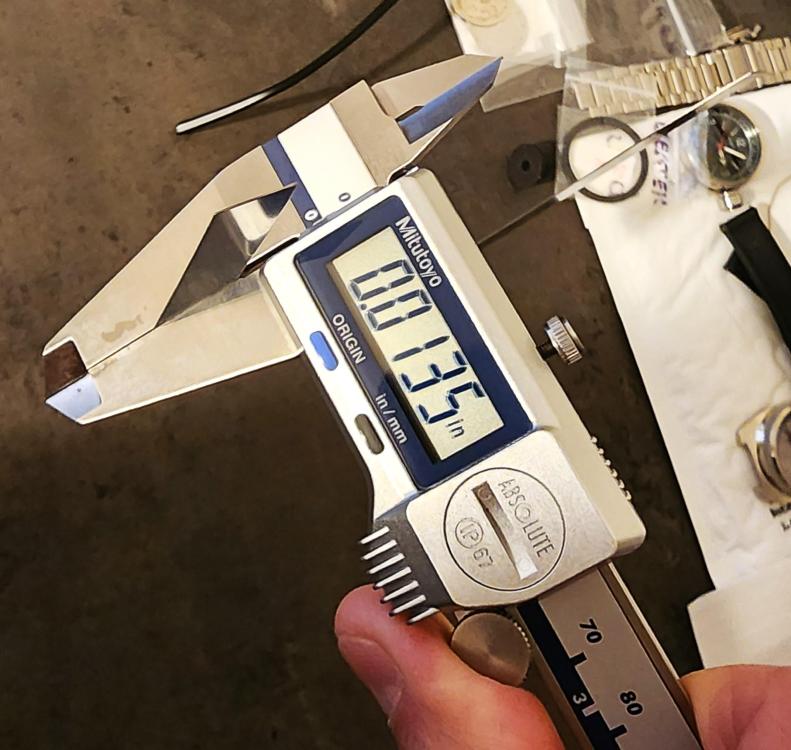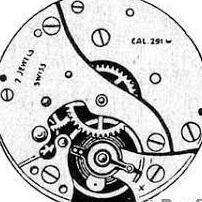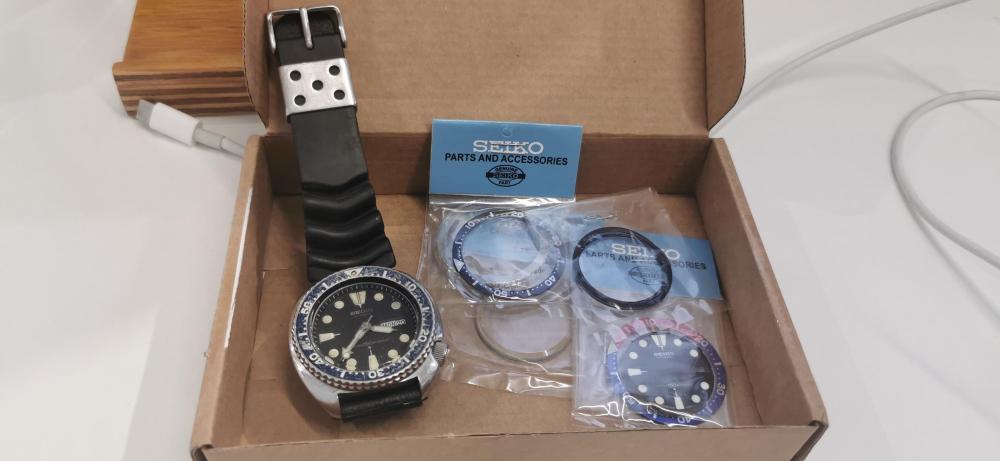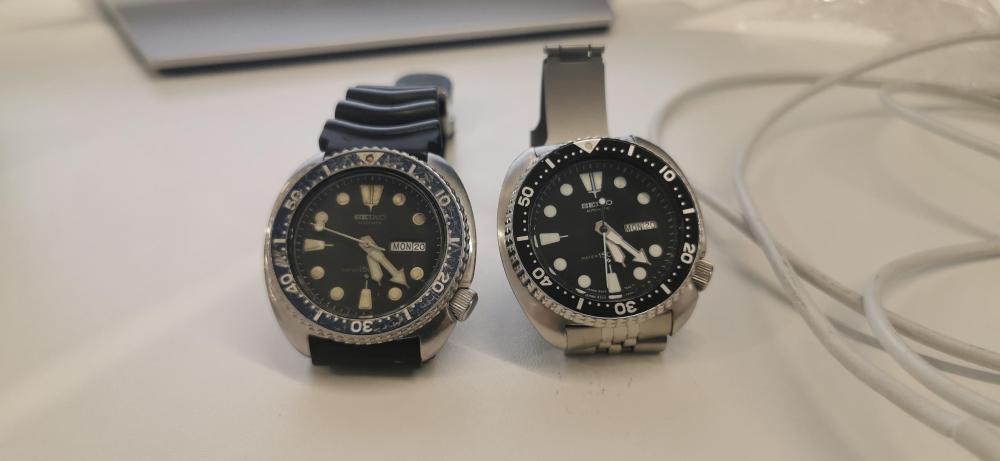Leaderboard
Popular Content
Showing content with the highest reputation on 11/20/23 in Posts
-
Black shellac or engravers shellac is what is used, you can find it at the link below. https://www.cousinsuk.com/product/engravers-wax-elephant-black?code=E0494 And this is quite a good video on how to use it.3 points
-
I just bought this on eBay. It's housing a Peseux cal. 7040 (or possibly 7046). It looks pretty with its côtes de genève. It's going to be interesting to see how it performs. As I understand it, this calibre is still being produced by ETA with a calibre number of 7001 (used by Nomos, for example). Again, thanks for the tip @nickelsilver!2 points
-
2 points
-
With clocks it depends on the dial. Long case brass dials a black wax is used. White dial clocks paint is used. Colouring sticks can be used. The sticks are also used in furniture restoration for touching up. Marc has hit the nail on the head with Black shellac or engravers shellac.2 points
-
I'm not 100% clear on something here? So what we're seeing is the watch was set exactly to time and nine hours later over a variety of days that's how fast the watch was running? We've already established that we don't know how wound up the watch was. It's always assumed that are automatic watches always fully wound up but it depends upon how much motions somebody has so unless it's actually wound up at the time we don't actually know so that will be a cause of variation. So what can cause a change of rate? We've already established amplitude what can cause amplitude changes beyond the mainspring? What about the gear train could that be a source of problem or if the watch has a calendar that the calendar changing have anything to do with this where even the gear train related to the calendar? Could any of this cause an amplitude variation? For instance I a timing machine I've ever noticed how the numbers seem to fluctuate? Now remember here were needing to look at really attempt of a second one second is a good enough for the timekeeping were looking at. Which I do think on the 1900 I think you may build a change it to measure tenths of a second. But in a case have you ever noticed your numbers slowly going up and down? What if you regulate the watch on one of those swings with the swinging up and down is over a five minutes for instance and you regulate of the watch during one of those up and down how would that affect the actual running time of the watch? So for instance what about this image What if one of those wheels was slightly out of round or what if the pivot was slightly bent what would that do to our timekeeping? In other words if the gear train was less than perfect and producing a power fluctuations what would that do so the interesting features of paper tape machines you can look for patterns for instance much harder to see on the LCD screen where the relatively short. With modern software and some modern timing machines for software to make a computer and a timing machine you can run time plots another way to look at the timing machine output. Makes it much easier to look for issues like this. So for instance here is a example of a cheaper watch. Ideally with time plots you're always going to see an up down gear trains will always produce pulsate's and the power but they should be relatively random. You never want to see a pattern on the time plot. Here's an interesting time plot notice how nice the numbers really look even though graphically they look bad. We can definitely see a pattern but the timing is really really good And because this is a Rolex I believe this watch has no regulator pins One of the interesting things with mechanical timepieces are they will average their mistakes over time. This is why if you look at Rolex timing specifications once they verify the watch pleases the timing machine then they run the watch for several days and average those numbers together to come up with an average rate per day. So on a instantaneous day your watch may appear to be outside of specifications but there timekeeping specifications is an average over time. One of the interesting problems here is if I interpret correctly the watches set exactly to time and nine hours later it's look that and we see random timing but normally watch companies average an average over 24 hours would that change anything? Plus they do a little more averaging would that change anything Here's something Rolex has half wound is 24 hours later fully wound up with courses fully wound up. Notice how in one position its 12 seconds fast how horrible. Except their criteria system so the first criteria is basically the isochronism the difference between a fully wound up and 24 hours later. The second criteria is averaging. Now this is where most watches are going to fall down this example is pleasing a timing machine. Then what about real-world timekeeping? Notice once again they average their numbers so on a instantaneous particular day at might look bad but the overall average is good. Oh and of course all of this assumes that whatever you using the time your watch is more accurate than the watch itself. Oh and while were here discussing precision timekeeping a little light reading in case you think your watch that pleases the timing machine or overnight keeps time maybe you could please a standard? But you will note that the standards and Rolex all base their timing on 24 hours. ISO-3159-2009 chronometer certification standard in English.pdf1 point
-
1 point
-
Preface: this isn't to be a nitpicker, just for future reference and the benefit of all On a forum like this, using a topic title that is descriptive is really important. For two reasons: -it aids when searching the forum for similar issues down the road -it aids other forum members who maybe have insightful info to click it and help, and other members who aren't the least bit interested from reading about something where they have no input to give. I realize as a newcomer it would be hard to know how to title something, but in this case, for example, instead of "QUESTION", which most posts are, you could say,"Unkown battery operated watch need help". Everyone with zero knowledge of electric/electronic watches will avoid (unless curious), those with a proclivity will check it out.1 point
-
I don't know about the tempering but the holes could be drilled by hand with an Archemedes drill.1 point
-
In my experience not much is compatible but I think it depends on what you have on the bench and what part you're looking for. Acroos all the Smiths movements listed on Jules Borel it shows some compatibility with only a few staffs, stems and keyless parts but not much else. The 60466e is supposedly identical to the civilian counterpart but so may parts look different- undecorated for the military watch. Some Astrals also have the military movement in them...so ca depend... ...and to address your parts list requests I went looking for the 60466e parts sheet that's part of an article somewhere but I can't recall where. It should be out there. AWCI is my go to for parts and repair documents but doesn't have anything for Smiths watches that I found...1 point
-
Hi all watch people, hope you are all doing well. Here is my first attempt at using the Star crown taps. The crown on grandfather's watch was very worn with virtually no grip left and quite undersize i thought for my chunky digits. So i decided to find something more suitable, finding the right thread on the assortment of crowns i had was proving tedious. So it seemed the perfect opportunity test out this little gadget, i must say I'm rather impressed. The drilling out of a smaller crown thread and re- tapping to the size i needed 0.95 was a complete doddle. A little oil required for both the drill and tap and with John's help discovering the depth stop on the crown vice saved me potentially drilling too far or breaking the tap. This is probably the first time I've managed to give the watch a full wind and bizarrely enough the amplitude has jumped by around 50° and the tg trace is vastly improved from the last time i checked. How crazy is that ?1 point
-
1 point
-
It's arrived! Along with the bits and pieces I bought for a refurb. Here it is next to the last one I did, which is my daily driver. It's actually keeping decent time from the looks, although I'll still do a complete service, but good to know it doesn't look like there are any immediate issues. The rubber strap is absolutely awful to wear, incredibly stiff. The case looks to have been polished, I think it should be more matte, but it's in okay condition. The rotating bezel is a bit loose, will be interesting to see what's under it. Also keen to see if that dial is original or aftermarket. It's pretty old and whilst it doesn't look like it has reference numbers I can tell they used to be there, and the Suwa Seikosha logo looks correct.. At any rate, that dial is going to be replaced, but it will stay with the watch along with the old hands and bezel for posterity.1 point
-
It's not exactly the same as a 7001, though I'm sure they share a lot of parts and function equally well. It begs the question why Peseux (and AS, and many others) made so many different, yet almost identical calibers. It's part of why there was already a government ordered consolidation of certain manufacturers earlier in the 20th century (post Depression)- when each company came with their hands out for subsidies to develop a new caliber, they were like, "there's not only no room for more of the same calibers, there's no room for all of you!". Obviously it's a long complex story, ending in the formation of ASSUAG (mandated by the gov and banks) and SSIH (more of a volontary merger of Omega and Tissot), but that's the gist. Eventually with the quartz crisis many makers went bust, and a lot of what was left got absorbed by SMH, founded by Hayek in the early 80s, and that became Swatch Group.1 point
-
Nobody ever seen the terminator films..... The Microsoft office suite now has AI built in called copilot, at work I get Outlook asking me if I need it to summarise the email I just got that it may well have written in the first place, and do I want it to compose a response, apparently reading and writing an email for yourself is way to tiring. MS Word wants to write my document for me with just a few lines of text to get it started. Universities have students getting AI to write their assignments and doing a better job than the students so they now have AI software to detect AI written assignments, but the AI can now outsmart that software so there is an 'arms race' in the AI written detection/detection-avoidance software. There is also a question in science about the infinite nature of the universe, something along the lines of, if there are so many stars there must be lots of planets and lots of planets with life and lots of that life must have had a significant head start on us and may be thousands or millions of years more technologically advanced than we are...so where are they? Why aren't they dropping in for coffee? One of the answers is that once machines reach the "Technological Singularity" they can evolve at an exponential rate and way beyond us and that's generally not good news for the organics, a view also held by Stephen Hawking... and may explain the absence of our morning coffee with ET. What can we do about it....nothing, the cat is out of the bag, all of those smart ET races in the universe before us couldn't contain it (assuming the hypothesis is correct) and some of them must have been way smarter than us so why think we can? Of course you could ask, so why aren't the machines talking to us then? Maybe the same reason we don't try to communicate with ants or single celled pond slime? Embrace our machine overlords!1 point
-
I can get whatever i want online, more or less. Just more hassle. I think they changed the regs so i can get odorless mineral spirit aka stoddard solvent locally as well. I have quart cans of that and naphtha, had to get the naphtha from amazon. Hexane is pricy, I guess a guy doesn't need a lot of it though. Was nigh impossible to get toluene for a while but i actually don't recall why i was sure i wanted some? race car guys want it to make their own race gas (it's a potent octane booster).1 point
-
I would approach it the same way I do with bezels, I use model enamel paint (se below) and overfill the engraving with enamel paint then quickly wipe over with my thumb. You are unlikely to get an exact colour match and painting new paint on top of old paint may not be a great idea. So when I do bezels I sit the part in acetone for 20-30 mins to remove the old paint and then paint fresh. Acrylic paint tends to be water based and would most likely wash off the next time the watch was serviced, but the enamel is oil based and 'weather proof' so would be much more resilient. I also saw a youtube video where (I think it was the Nekkid Watchmaker, but I can't remember the episode, link) used coloured epoxy putty on a bezel in much the same way as myself and @RichardHarris123 mentioned about the paint, ie rubbed into the engraving and then rubbed off. I did get some of the milliput (see below) but I haven't used it as the enamel paint method has always worked for me, maybe I should give it a go with the putty next time. Epoxy Putty: Paint:1 point
-
You must have browsed through my post in a hurry to get to the next post quick. Notice I say " the watch " in dynamic state , not "the oscilator" , as you move your wrist you subject the oscilator to angular acceleration/ declerate, furthure the watch goes through infinate positions on wrist. On tg , however, the watch is sitting still, and is not subjected to external forces, other than gravity which is constant and not dynamic. So , dynamic external forces don't come into the picture with the watch in static position, namely on bench or tg. You keep forgetting that I am non native English speaker matey. Rgds1 point
-
Your watch definitely has a problem dial down. Ideally, you should see the same values dial down as dial up. 50 - 70 deg. less than dial up is a big difference. It's impossible to say why without a complete disassembly and close inspection of the balance, lower pivot and jewels to begin with. Having said that, I don't see any reason why the watch would suddenly lose 4 min. over night. If that happens again, put the watch on the timegrapher straight away and record the results. As you don't seem to have access to a good watchmaker, and you can't do your own servicing and inspection (yet), I think you will have to live with what you have. The timekeeping at least seems fine at the moment, and in the end that's what counts!1 point
-
Hi the best way is using a lathe and drill attachment or a chuck in the tail stock. I made a drilling flag that fits the tool post and the broken end runs in the guide and the drill is placed through the guide to drill the arbour, I have also used a vertical drill to do the same job with no problem.1 point
-
Yes that is exactly what it means. The simplistic is does your watch keep time with varying amplitudes. As you picked the caliber let's look at the timing specifications for this watch. Technical specifications are interesting for the various watch companies not always seen by the watchmaker because they could be separate documents. So for instance the manufacturing information I've attached a PDF for this watch. Then this watch comes in two separate grades with the only difference in the image below timing specifications nothing else. Some of the other grades will have more differences than just timing like better balance wheel with better hairspring and even better mainspring or different mainspring with different alloy. But here we only get timing it some Timing specifications are interesting in that basically it's a window and the factory or for that matter people at I know that work at service center is they just have to get the watch with in the window they do not regulate to zero. To the supplier given out of range your watch will be anywhere within this range and be acceptable. Then all we care about is isochronism in this particular case CH sans for dial up the watches checked over 24 hours and we have a number. They do not look at the watch in various positions as that adds complications to the sort of thing. You do realize I don't have a PhD in all this? The unfortunate reality is the escapement screws up timekeeping. For instance if you watch was running at 150° the lift angle typically is around 50° one third of that would be under the influence of the escapement. Let's look at it interesting a video. Normally I like to refer people to this video for the lever escapement only and I never watch the rest of the video. But today the rest the video is more interesting. Or basically the entire video. In an absolute perfect oscillation system you would like to have zero influenced from everything. So anything that influences your balance wheel will screw up timekeeping. The unfortunate reality is the escapement is a necessary evil. The escapement supplies energy but it also screws up the timekeeping. Remember the lift angle number that's the number of degrees that the escapement is screwing things up. So we can change our watches unfortunately were stuck with a lever escapement but what if we were manufacturing what if we were clever like for instance the video different escapement it should screw up the timekeeping less and bump the price up out of our site so we will never get the service one of these. https://youtu.be/gIOd7Bpuw9U?si=oK4NVzdqQBsp92-9 Let's look at a different example of this let's go back to Wikipedia lookup escapement and you'll notice the word isochronism lurking here and there https://en.wikipedia.org/wiki/Escapement So he can read through all of it but all I care about is one particular escapement the detent escapement and is going to quote from Wikipedia. Notice what it says most accurate escapement for balance wheel timepieces. In order to keep perfect time the balance wheel shouldn't be influenced by anything including the escapement. If you can reduce the influence of the escapement you should improve timekeeping. So for instance the detent escapement only impulses in one direction the balance wheel will pass by in the other direction with almost or basically no effect at all. It's really quite a fascinating escapement the watch Notice the second paragraph disadvantages it's fragile. One of my friends used to service Marine chronometers and when things go bad on these they can go very very bad in a repair will become extremely extensive. If you look carefully at the design there's only one jewel holding the escape wheel in place and if it's moved by curious people playing with the balance wheel or a variety of reasons that jewel might decide to fail the destruction will be very expensive. The detent is a detached escapement; it allows the balance wheel to swing undisturbed during most of its cycle, except the brief impulse period, which is only given once per cycle (every other swing).[38] Because the driving escape wheel tooth moves almost parallel to the pallet, the escapement has little friction and does not need oiling. For these reasons among others, the detent was considered the most accurate escapement for balance wheel timepieces.[41] John Arnold was the first to use the detent escapement with an overcoil balance spring (patented 1782), and with this improvement his watches were the first truly accurate pocket timekeepers, keeping time to within 1 or 2 seconds per day. These were produced from 1783 onwards. However, the escapement had disadvantages which limited its use in watches: it was fragile and required skilled maintenance; it was not self-starting, so if the watch was jarred in use so the balance wheel stopped, it would not start up again; and it was harder to manufacture in volume. Therefore, the self-starting lever escapement became dominant in watches. ETA 2804-2 - Manufacturing Information.PDF1 point
-
Scraping gold or silver cases can depend on the price that the market is at at that time. I can remember back in the 70's silver hit an all time high, people where bringing in silver tea sets, candelabras, silver cigarette cases and God knows what and selling them for scrap, the scrap price was higher then what the items were worth. We had to go to the bank because we ran out of cash.1 point
-
Somewhere between then and now I got a more complete kind of service guide. The original one just cover the 3135 whereas the manual itself is supposed to cover several calibers. So now we have the manual it more or less is complete. Then we get the parts list and somewhere in the universe I found a lubrication chart. CALIBER-3135-3155-3175-3185-TECHNICAL-INFORMATION.pdf Rolex oil chart 3135.PDF Rolex 3135 parts.pdf1 point
-
I'm a chemical engineer with a very basic understanding of software. Here's my take, AI will write the software, improving as it does so, for the foreseeable future the program will be checked by a person. Same with legal documents etc, AI writes the documents, drawing on thousands of past documents, then proofread by a person. The amount of people required to write the programs or legal documents etc will be reduced.1 point
-
Was the watch fully wound every night when left to resr back down? Or, You just take it off the wrist? If not, then the torque in the spring can differ a lot every morning.1 point
-
They had a specific caliber for chronometer competitions, the 260, which is a legendary watch. Those are quite hard to find (and very expensive), but all the other movements of theirs that I've worked on have just been superb runners, great timing, great no-frill quality. Can't believe I didn't mention Zenith- who also made a competition-specific caliber, the 135. All of their hand wound calibers I've seen have been fantastic.1 point





